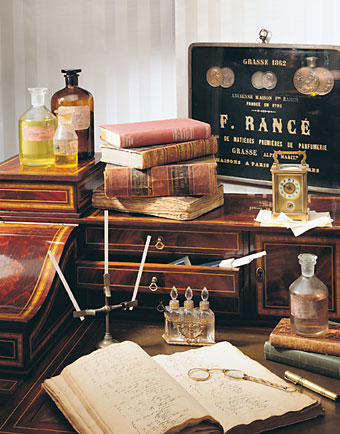
courtesy of Rancé 1795
The House of Rancé traces its provenance back to the early 1600s – those days of parfumeurs-gantiers, the scenting of gloves for Grasseois aristocracy. François Rancé garnered the favor and patronage of Emperor Napoléon Bonaparte, thus rendering him the most influential perfumer of his time. In 1795 he moved to Paris and dedicated himself solely to the perfumer’s art, composing fragrances for the imperial couple and those beloved among their scented circle. This tradition has endured for over 200 years withstanding time, taste and Alexandre Rancé’s eventual relocation to Milan in the late 1800s. The House of Rancé continues to flourish within its family origins thanks to Jeanne Sandra Rancé and son Jean Maurice Alexandre. While Rancé may not be a household name, it is very familiar to those who’ve been passionate about perfume and history for a good long while; it’s our hope to rekindle curiosity and invite exploration of their exquisitely composed fragrances. Theirs is a tradition of unremitting quality, devotion to innovation (remarkable scientifically-based skincare, the ongoing creation of new perfumes and scented products) while retaining refinement through employment of superb natural materials.
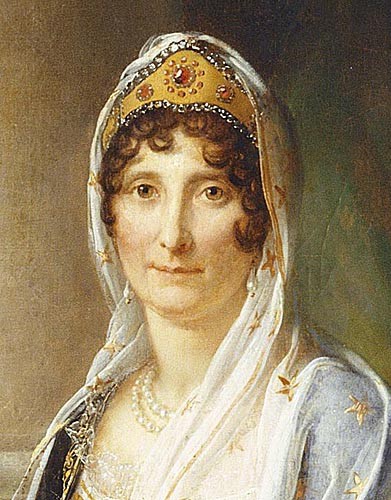
Maria Letizia Ramolino-Madame Mère by Francois Pascal Simon Gerard
One benefits from candor. Years ago there were critics (aren’t there always?) who remarked that Rancé fragrances felt dated. Indeed – fashions, tastes vary over the years: quality, however, does not. Excellent design remains excellent despite the passage of time. A thing of beauty IS a joy forever. Perfumer Jeanne Sandra Rancé has labored over traditional family perfumes with an eye towards re-invigoration of classic receipts so that their appeal might be appreciated by a wider audience. Bearing this in mind, Rancé 1795 Laetitia – so named in honor of Napoléon’s formidable mater familias Maria Letizia Ramolino born in Ajaccio, Corsica (home to those world-renowned violets!), a force of nature whose practicality and discipline shaped both her son and his destiny. Napoléon was to opine of his mother admiringly: “She faced everything – the privations and the fatigue. She endured everything. There was a man’s head on her woman’s body.”
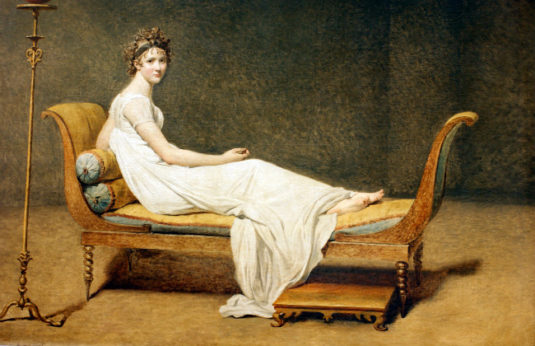
Madame Récamier by Jacques-Louis David
Rancé 1795 Laetitia (translated from the Latin as ‘joy’) is a woody floriental perfume of considerable tenacity and delicacy, elegant and eminently wearable. As we have no access to the original fragrance, we can only speak to current formulation – but I’m tickled by its contrast to her namesake’s purported character. This lady was as no-nonsense as it gets by all accounts, and Rancé 1795 Laetitia is deliciously airy, spicy, a pleasure to don. It exists to please: think of it as a duvet perfume which is pillowy and comforting, one which puts us at ease. Worn before sleep, you yield yourself to the arms of Lethe without reservation; it soothes daylong and softens life’s bumps and bruises with aplomb. Did I mention its beauty? Laetitia is undeniably lovely – this she shares with Madame Mère, who was greatly admired for her physical attributes. My suspicion is that the perfumer intended to create something exquisite for her to adore and perhaps to flatter her (much like portraiture which seeks to embellish the patron/subject). And if he did? Wherever is the harm in that? The aromatic legacy which remains is utterly delightful.
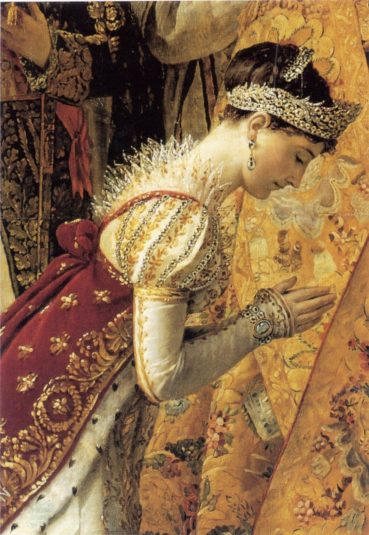
Empress Josephine Jacques Louis David
Rancé 1795 Laetitia opens with a citric burst of juice-drenched fruit and flower in varied hues of apricot (if perfume were a color). Nutmeg and cardamom chime in convivially, beckoning us into the realm of spicy/fruity/floral. While I rarely envision magnolia as primarily spicy, I certainly do smell its presence in rose, peony, and wisteria – and they dance attendance here while magnolia’s creaminess lends a fetching rondeur. This is all very Oriental in feeling and only becomes more so as the base notes fold in like cake batter components: patchouli, Tolu balsam and vanilla present as earthy, woody notes adorned with spice. Labdanum’s leathery amber adds weightless depth, which is a feat in itself. I marvel at how easy Laetitia is to wear: it floats, hovering above the flesh like a benevolent chimera. It will revisit you throughout the day in one guise or another and accumulate compliments along the way. If this is old-fashioned, so be it. Personally speaking, it is a pleasure to array oneself in fragrances which are graciously obliging and smell wonderful no matter what the occasion. I don’t think that’s an overstatement.
Notes: bergamot, mandarin, orange blossoms, Bulgarian rose, magnolia, peony, wisteria, nutmeg, cardamom, patchouli, cistus labdanum, Tolu balsam, Réunion vanilla
Many thanks to the folk at Europerfumes for my beautiful tester! Such a delight. My nose is my own…
~ Ida Meister, Senior Editor and Natural Perfumery Editor
Follow us on Instagram @cafleurebon @official_europerfumes @rance1975
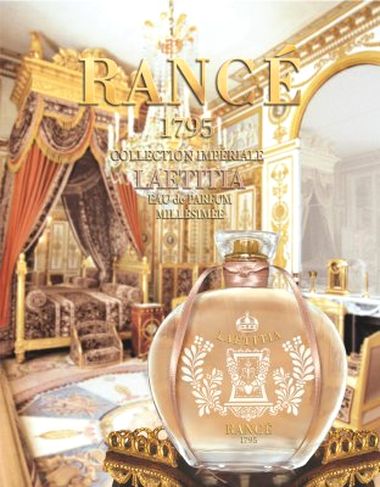
Thanks to the largesse of Europerfumes the US distributor, we have one 100 ml bottle of Rancé 1795 Laetitia available for one registered reader in the USA. Please be sure to register. To be eligible please let us know what appeals to you about Ida’s review and your notion of timeless. Draw closes 3/18/2018
We continue to celebrate Women Perfumers like Jeanne Sandra Rancé
We announce the winners only on site and on our Facebook page, so Like ÇaFleureBon and use our Blog feed…or your dream prize will be just spilled perfume.
